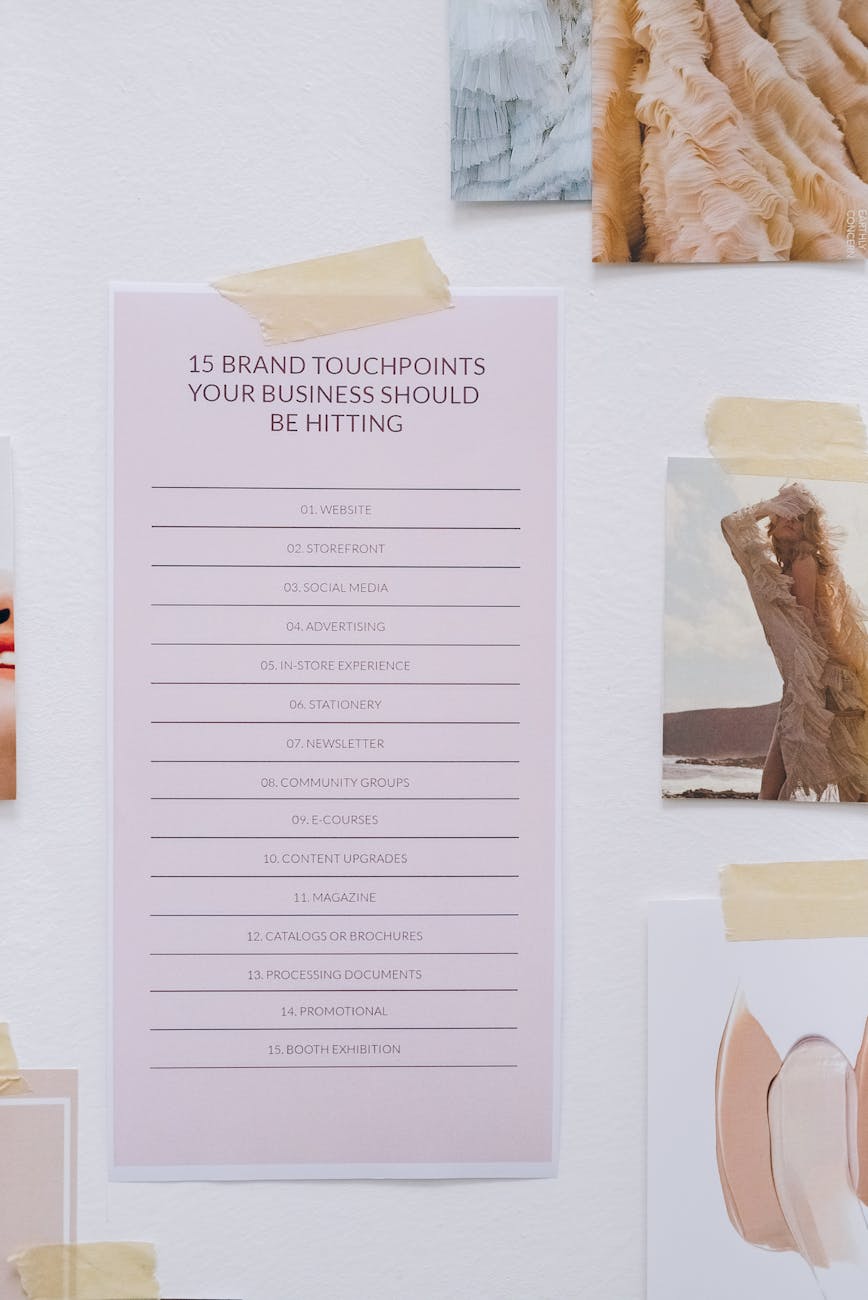
As a founder embarking on the exciting journey of creating your startup, having a well-structured startup prototype checklist is paramount. This checklist serves as your roadmap, guiding you through essential build MVP steps that lay the foundation for your concept. Understanding the significance of features in your Minimum Viable Product (MVP) paves the way for effective prototype development lists that prioritize user needs. Furthermore, embracing rapid prototyping methods alongside strategic iterations based on user feedback will enhance your approach to product design. With these early stage checklists and crucial product design steps at your disposal, you’ll ensure a seamless transition from idea to reality. This tech prototype guide will equip you with everything you need to transform your vision into a functional prototype, setting the stage for future success.
Checklist: Define MVP Features
Defining the features of your Minimum Viable Product (MVP) is a critical step in the product development process. By focusing on the essential elements, you can effectively validate your startup idea while minimizing time and resources. Follow this early stage checklist to outline the core features that will form the backbone of your MVP.
| Step | Action Item | Considerations |
|---|---|---|
| 1 | Identify User Pain Points | Understand the key problems your target audience faces. Use customer feedback or surveys. |
| 2 | Prioritize Features | Utilize a prototype development list to distinguish between must-have and nice-to-have features. Focus on solving the primary pain points effectively. |
| 3 | Align with Business Goals | Ensure that each feature aligns with your overall business goals and objectives. This will keep your MVP on target for both users and stakeholders. |
| 4 | Define Success Metrics | Establish success criteria for the MVP features. Consider user engagement, satisfaction, and conversion metrics to measure effectiveness. |
| 5 | Create User Stories | Write user stories to articulate how potential customers will interact with each MVP feature. This helps clarify the user experience. |
| 6 | Iterate on the Feature Set | Be prepared to refine your MVP based on feedback and changing needs. Create a flexible tech prototype guide to facilitate this process. |
By using this structured approach, you ensure that the features included in your MVP serve a crucial purpose in delivering value to your users while paving the way for future iterations. Remember, defining MVP features isn’t just about what you want to build; it’s about what your users need and how those features can help validate your startup idea.

Tip: Rapid Prototyping Methods
When you’re preparing to build a prototype for your startup, it’s essential to choose rapid prototyping methods that can efficiently bring your ideas to life. Rapid prototyping allows you to create a tangible representation of your Minimum Viable Product (MVP) quickly, enabling you to test and validate your concept without investing excessive time or resources.
3D Printing
3D printing is an excellent method for startups with physical products. This technology allows you to create complex shapes and functional prototypes in a matter of hours. It’s cost-effective and reduces the need for multiple iterations. By utilizing 3D printing, you can easily adjust designs based on user feedback and test their functionality swiftly.
Wireframing Tools
For digital products, using wireframing tools like Sketch or Figma is ideal. These tools help you visualize the basic layout and functionalities of your MVP. Wireframes act as a blueprint of your application and enable you to make adjustments quickly based on user interactions. An effective prototype development list includes tools that allow collaboration, making it easier to get input from stakeholders throughout the process.
Clickable Prototypes
Clickable prototypes build on static wireframes by allowing users to interact with a simulated version of your final product. Tools such as InVision and Marvel enable you to create these interactive prototypes without any coding. Employing clickable prototypes makes user testing more informative, giving you real-time insights into usability, which is essential during the early stage checklist.
Low-Fidelity and High-Fidelity Prototyping
Depending on your needs, you may choose between low-fidelity prototypes (simpler, less detailed) and high-fidelity prototypes (closer to the final product). Low-fidelity prototypes are great for gathering initial feedback, while high-fidelity prototypes provide a closer representation of what the end product will be like. Incorporating both into your product design steps keeps your development aligned with user needs.
By leveraging these rapid prototyping methods, you can significantly enhance your chances of success by iteratively testing your product features and refining them based on real user feedback. This approach not only saves time and cost but also ensures that you are on the right track before committing to full-scale development. Remember, your goal is to create a prototype that resonates with users and meets market demands—using the right rapid prototyping techniques is key to achieving this.
Strategy: Iteration After User Feedback
Once you’ve developed your initial prototype, the next crucial step is to gather user feedback. This phase is instrumental in honing your product and ensuring it aligns with user expectations. Iteration after user feedback isn’t just about making changes; it’s a systematic approach to improving your MVP.
Start by collecting qualitative and quantitative data from users interacting with your prototype. Use various tools like surveys, interviews, or analytics to understand user experiences. Focus on identifying pain points, usability issues, and feature requests. This information will help inform your prototype development list as you refine your design.
Incorporate a cycle of testing, learning, and refining. After each round of feedback, assess which changes are necessary and prioritize them based on impact. Build MVP steps can guide you in this process, ensuring that you focus on the essential features that deliver maximum value. Aim for incremental improvements rather than a complete overhaul—this is often more manageable and allows for faster iterations.
Additionally, use an early-stage checklist to track improvements and adjustments made during this iteration phase. This documentation not only provides clarity but also serves as a communication tool for your team.
Lastly, consider using a tech prototype guide to navigate user feedback efficiently. This ensures that changes are not only user-informed but also technically feasible. By consistently iterating based on user feedback, you’ll develop a product that resonates with your target audience, significantly enhancing your chances of market success. Remember, each iteration brings you closer to a product that genuinely meets user needs.
Frequently Asked Questions
What is the purpose of preparing a checklist before creating a prototype?
Preparing a checklist before creating a prototype is essential as it helps you organize thoughts and ensure that no critical elements are overlooked. By outlining specific goals, resources needed, and steps to take, the checklist guides you through the entire prototyping process. This organization enhances efficiency and helps identify potential gaps in your planning, ensuring a smoother transition from concept to a working prototype. Ultimately, it saves time, minimizes errors, and increases the chances of developing a successful product that meets user needs.
What elements should I include in my prototype checklist?
Your prototype checklist should encompass a range of vital elements to ensure comprehensive coverage throughout the prototyping process. Key components to consider include defining the project goals and target audience, listing essential features and functionalities, assessing available resources and tools, and outlining the testing scenarios to validate the prototype. Additionally, include a section for feedback mechanisms to gather insights from users, and ensure the documentation is thorough for future iterations. By accounting for these elements, you can create a more effective and user-centric prototype.
How can I gather user feedback effectively during the prototyping phase?
Gathering user feedback effectively during the prototyping phase involves implementing structured mechanisms to ensure the insights you receive are actionable. Start by identifying representative users who reflect your target audience, and conduct usability testing sessions where users interact with your prototype. Utilize surveys or interviews immediately after these sessions to capture their reactions and suggestions. Additionally, consider employing A/B testing for different iterations of the prototype to compare performance. Analyzing this feedback quantitatively and qualitatively will provide you with vital information to refine the product, enhancing its effectiveness before the final launch.






